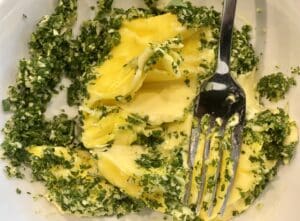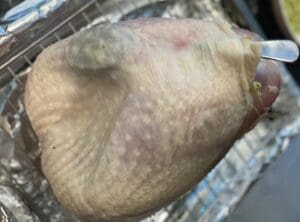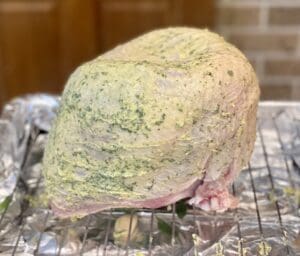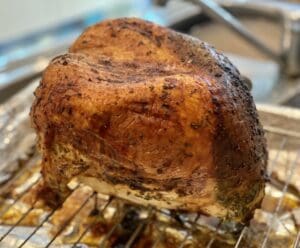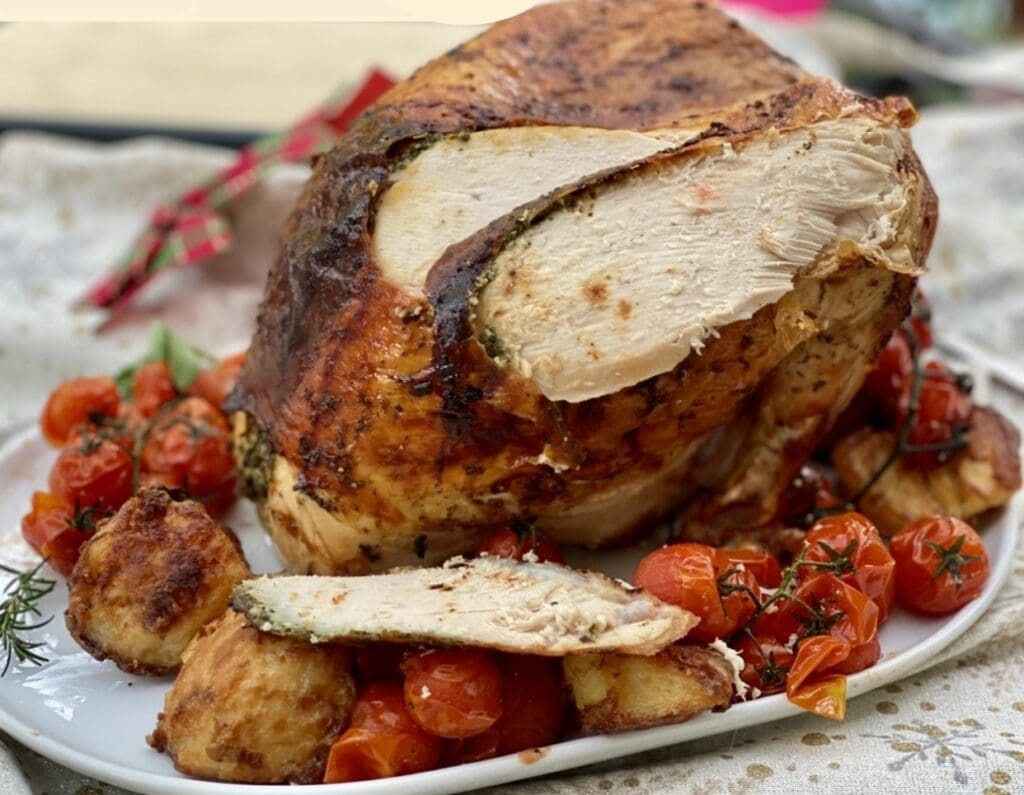
If you don’t want to roast an entire turkey or have a small group to feed, then this simple succulent herb Roast Turkey Breast (crown) is for you!
No, not the turkey!
For a long time, my family banned turkey from appearing on our Christmas table. It all started when my parents got frozen turkeys as a Christmas gift from their factory.
My parents worked for the same factory making vertical blind parts for 4 decades. Even though they got paid for peanuts, they worked hard and loved their jobs. Sadly, they retired early when the owner moved his business to China.
I was in uni when I heard about their job redundancies. The news shocked our entire family. Back then, redundancies weren’t all that common. Now almost everyone I know has been through redundancies at least once!
Every Christmas, my parent’s old boss would gift his staff with food hampers filled with yummy treats. My sister Nara and I ate all the chocolates when no one looked.
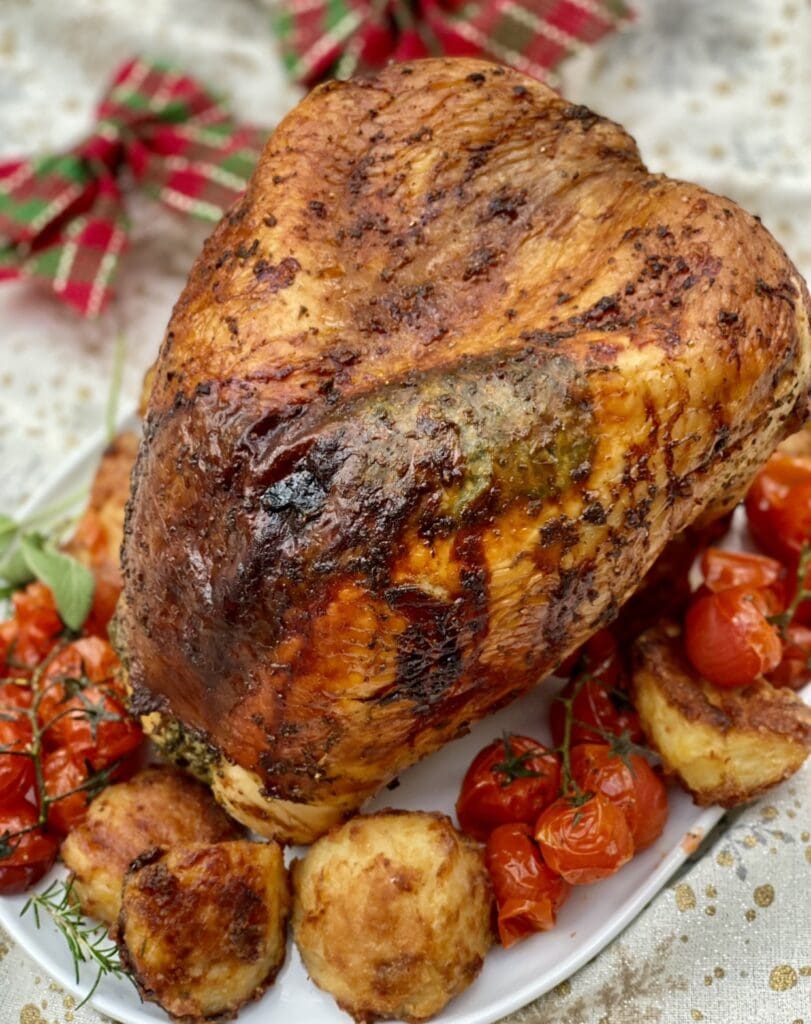
However, one Christmas, there was no hamper but two giant frozen turkeys. My mum’s an amazing cook, but she’s never cooked with turkey before. Our brother Vince, who was in his early twenties at the time, took charge. Mind you, he’s roasted nothing in his life!
Feeling confident, Vince woke up early to roast the turkey. He placed the turkey as it was on the tray with no seasoning and shoved it in the oven.
Our family was so excited to try turkey for the first time. We imagined Turkey tasting like heaven because that’s how it looked on TV. A special delicacy only for those very special occasions.
After being in the oven for 4 hours, it was finally ready, and we were all starving by that stage. Looking promising, Vince proudly carved the turkey. We were all smiling excitedly until we chewed the turkey. It was the tasteless and driest meat we’ve had! Even our hunger couldn’t disguise how bad that turkey was.
‘No more turkey at Christmas’ dad declared, and we all nodded rapidly in agreement.
Roast Turkey Breast (Buffe, Buffet or Crown)
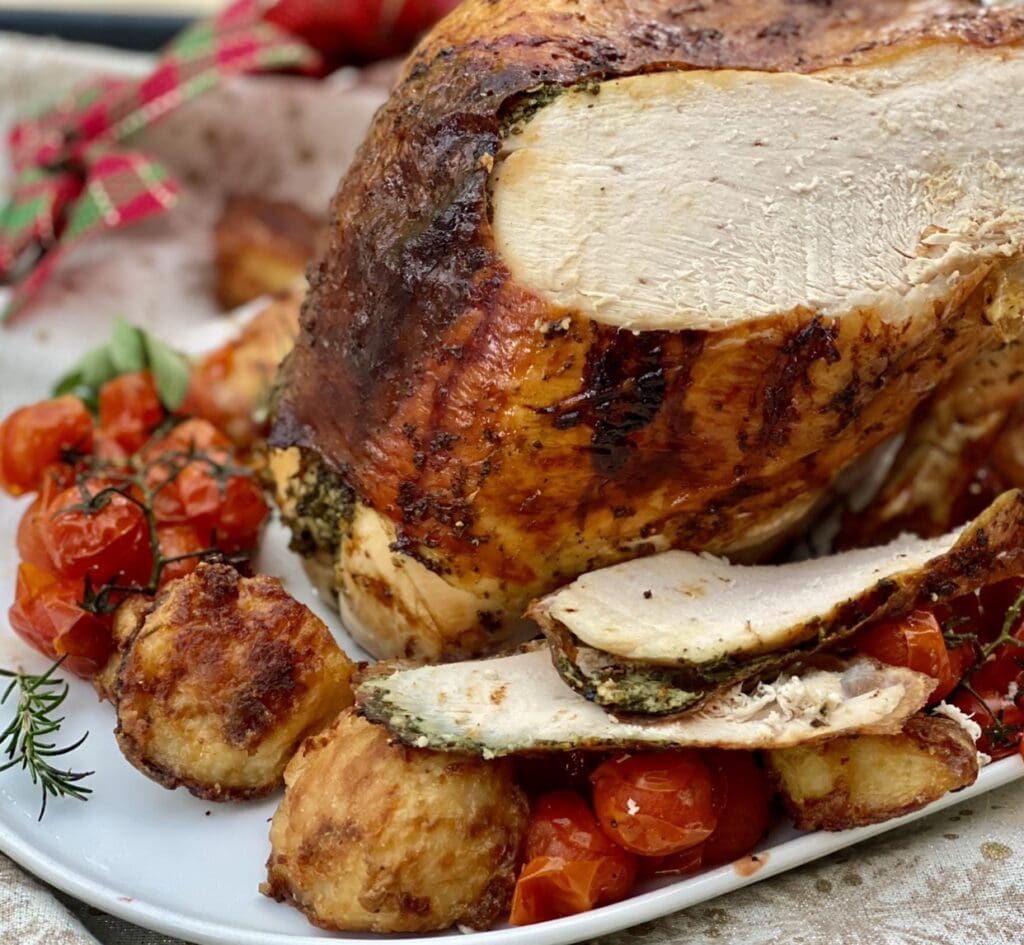
What is a turkey buffe?
A turkey buffe (also known as buffet or crown) is the entire breast of a turkey with its legs and wings removed. The breast bone and some of its cavity are still intact.
Turkey buffe also comes in different sizes just like whole turkeys. They’re ideal for people that prefer the ‘white’ part of the turkey. It’s convenient to prepare and serve and makes carving easier.
Roasting takes a lot of preparation, so this turkey buffe cuts time and effort in the kitchen. We make a simple herb butter with just garlic and sage, then massage it between the skin and flesh and all over the turkey and in the oven it goes!
No fuss, simple and flavoursome! This juicy Roast Turkey Breast weighed 3kg (6.6lb) and feeds 6 to 8 people!
Why is my turkey dry?
Turkeys are expensive and they take a few hours in the oven, so it’s ultra disheartening when you discover your enormous bird tastes a little like leather. Don’t despair because it doesn’t make you an awful cook because most of us have been there!
Turkeys are large with little fat, so their flesh is very lean. Considering this equation, it’s tricky to get right! Here are some tips I’ve discovered through trial and error!
Lots of butter and baste – Don’t be shy with the butter, slather it everywhere onto, under and over the turkey. Butter helps not only keep the turkey moist, but it’s also delicious, especially when it’s mixed with fresh herbs.
Too long in the oven – Most of all are frightened of undercooked poultry thanks to salmonella and probably would choose to overcook than undercook poultry, leaving it dry. Invest in a thermometer, as it’ll eliminate the guesswork. The turkey should be 71 to 74°C (160 to 165°F) when inserted into the thickest part of the flesh.
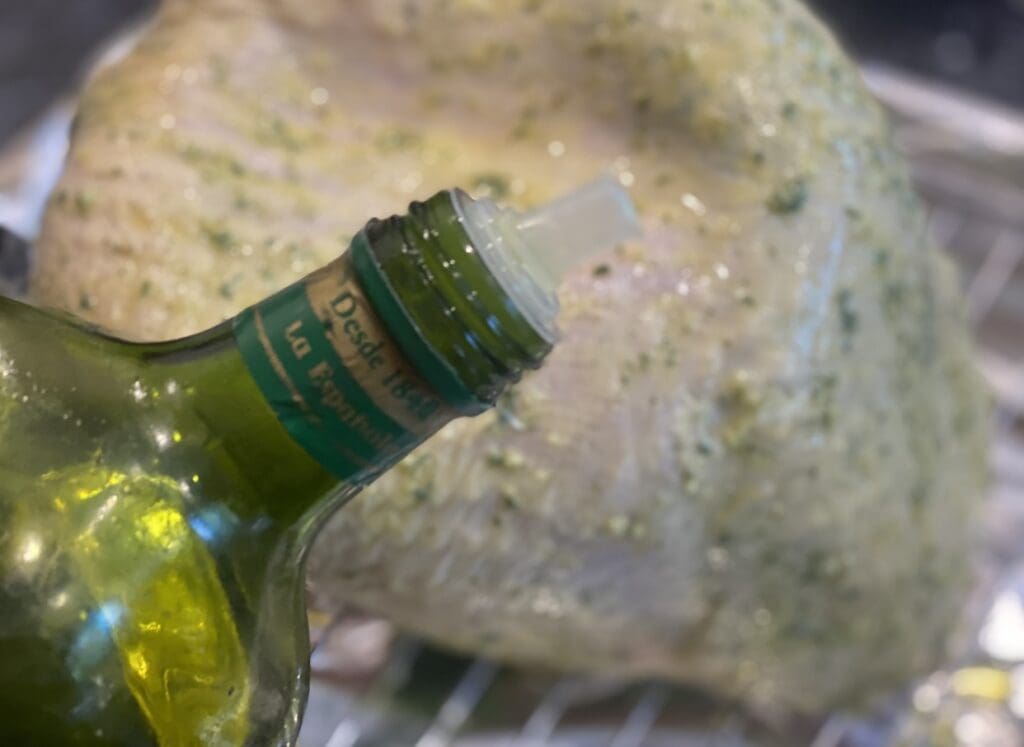
Rest your turkey – Many chefs call for the turkey to be rested for the same time as it’s been in the oven. Sounds crazy right?! So if your turkey’s been in the oven for 3 hours, rest your turkey for 3 hours too! Heck, I’ve never done that before. As you may all know, I’m bloody impatient. I do, however, rest my turkey at least for 30 minutes and if I have time, I’ll do it for an hour.
Why rest the turkey after roasting? If you carve immediately into the turkey, the juices will run out and leave its flesh dry. Resting time allows the juices to reabsorb into the meat, leaving it juicy and flavourful.
How do I save a dry turkey? We can’t turn back time, but we can make the most of a dry turkey! Slice your turkey super thin, the thinner the better! Serve your thin slices of turkey with loads of delicious homemade gravy, condiments and kick*ss sides like Duck Fat Potatoes and Prawn Halloumi Watermelon Salad. Lastly, pour some vodka into their drinks when they’re not looking… haha just joking!
This way people won’t even notice your turkey was dry! So, let’s fill our plates and glasses up to the rim, relax and enjoy our time with family and friends!
Here are some more recipes that’ll impress your guests:
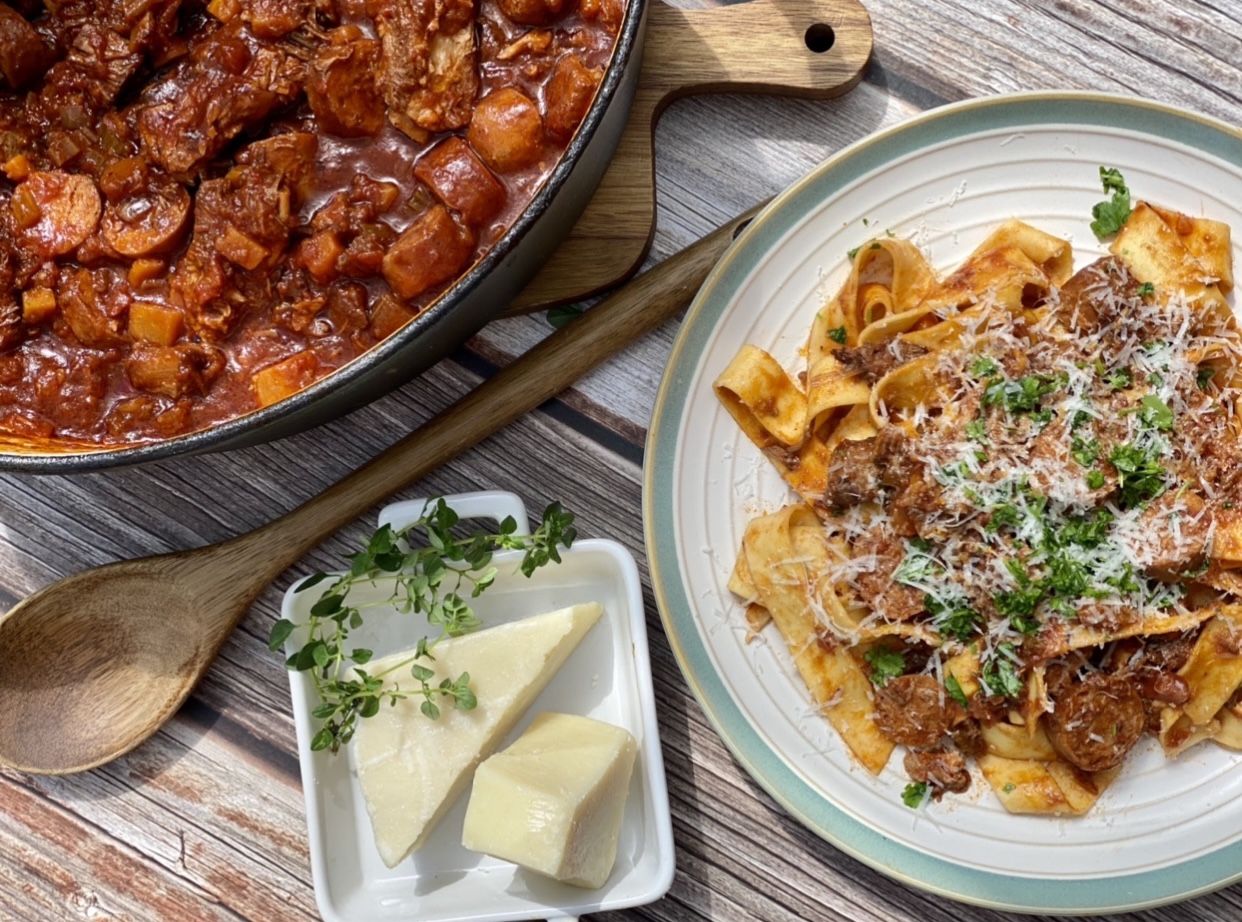
Ragu with 3 meat
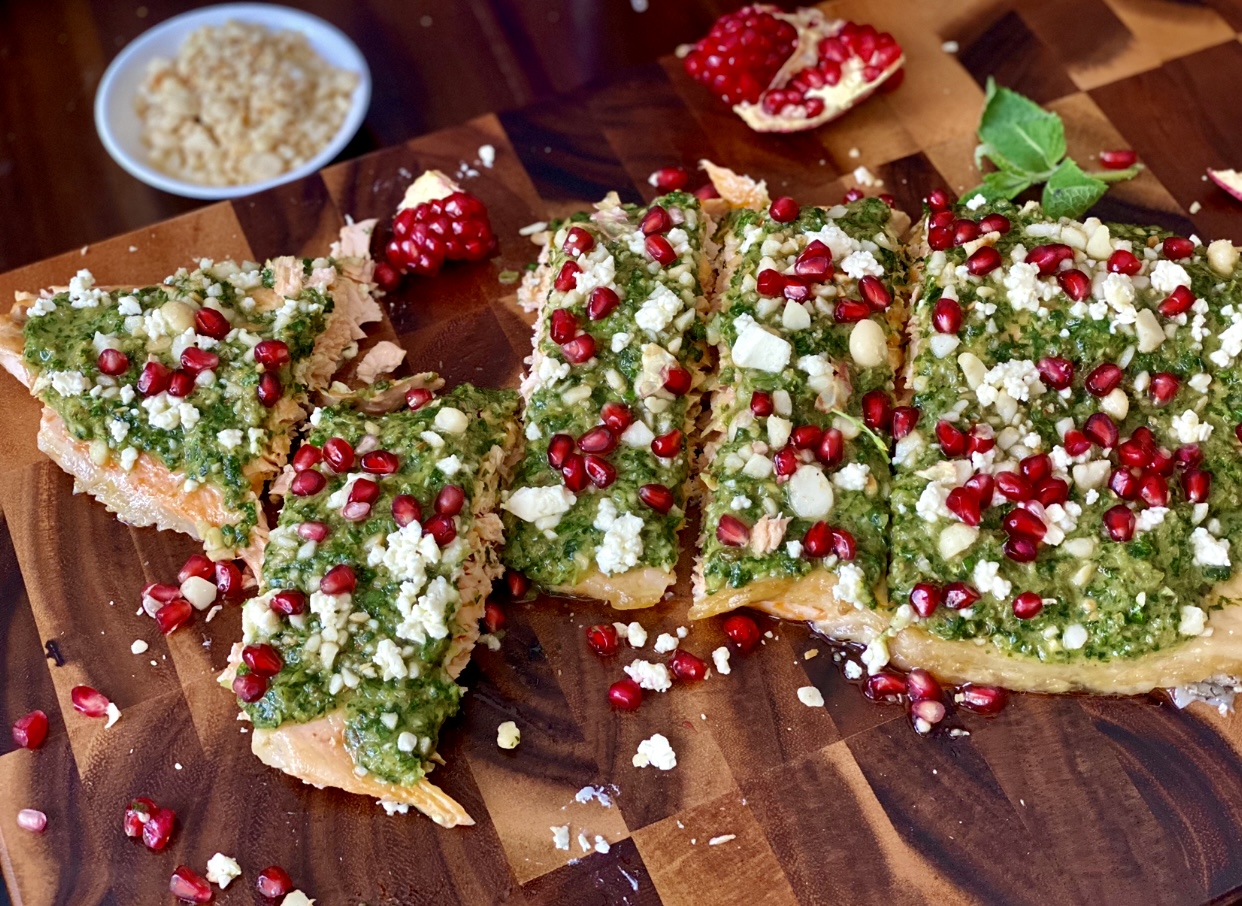
Salsa Verde with Salmon

Lobster Mornay
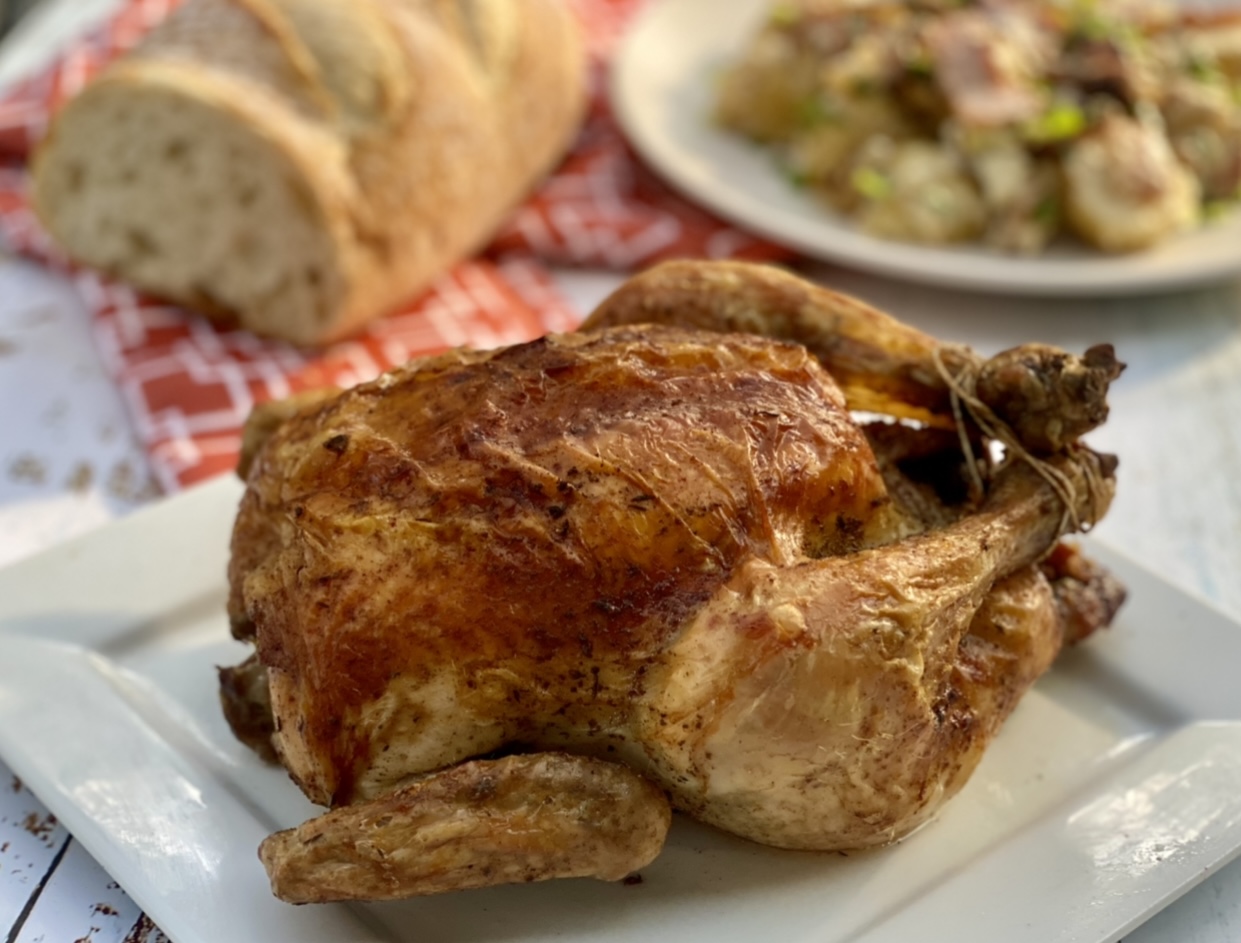
Chicken & Garlic Bread Stuffing
Ingredients for Roast Turkey Breast
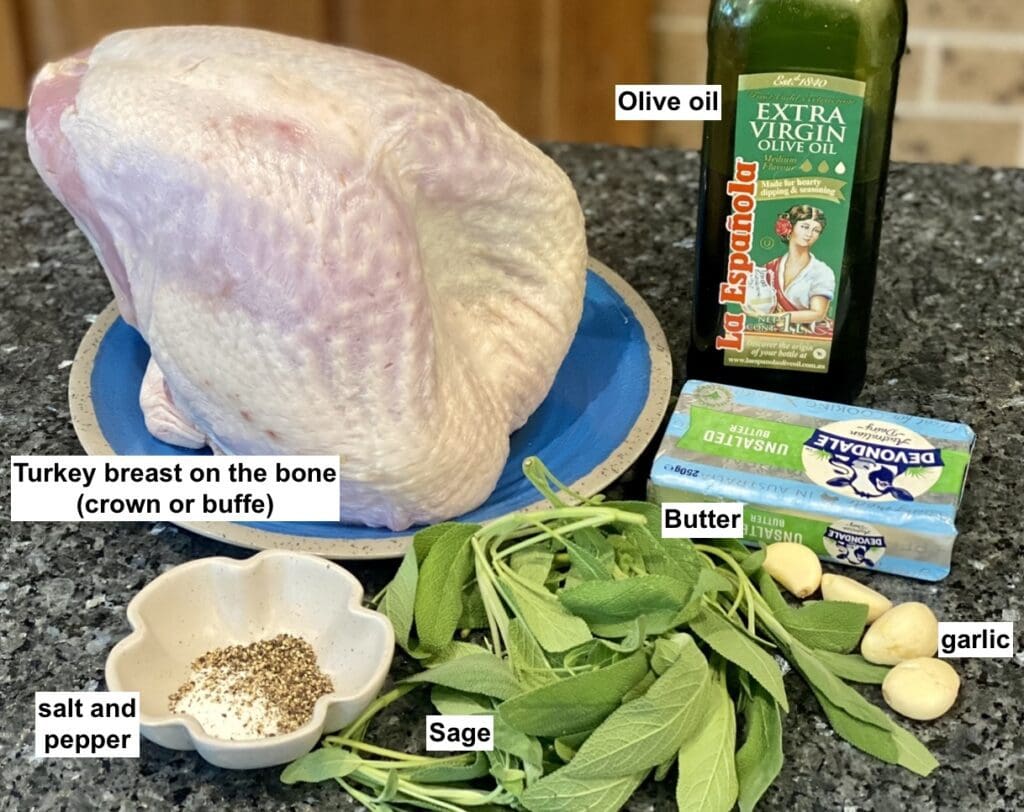
Turkey – My turkey breast (crown or buffe) weighed 3kgs (6.6lb), so you’ll need one that weighs approximately between 3-3.5kgs (6.6-7.7lb). The turkey came frozen, raw and bone-in. It took me 2 days to fully defrost the turkey in the fridge.
Sage – To keep things simple, I just used sage leaves for my herb butter. However, you could swap sage for an equal amount of your favourite herb. Fresh parsley, rosemary, chives, thyme are all great choices, and you could also mix herbs together for your butter.
Subscribe to 3CatsFoodie’s FREE Newsletter
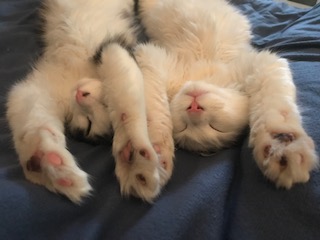
For the latest recipes and other fun stuff!
How to make roast Turkey Breast
Step-by-step guide with photos
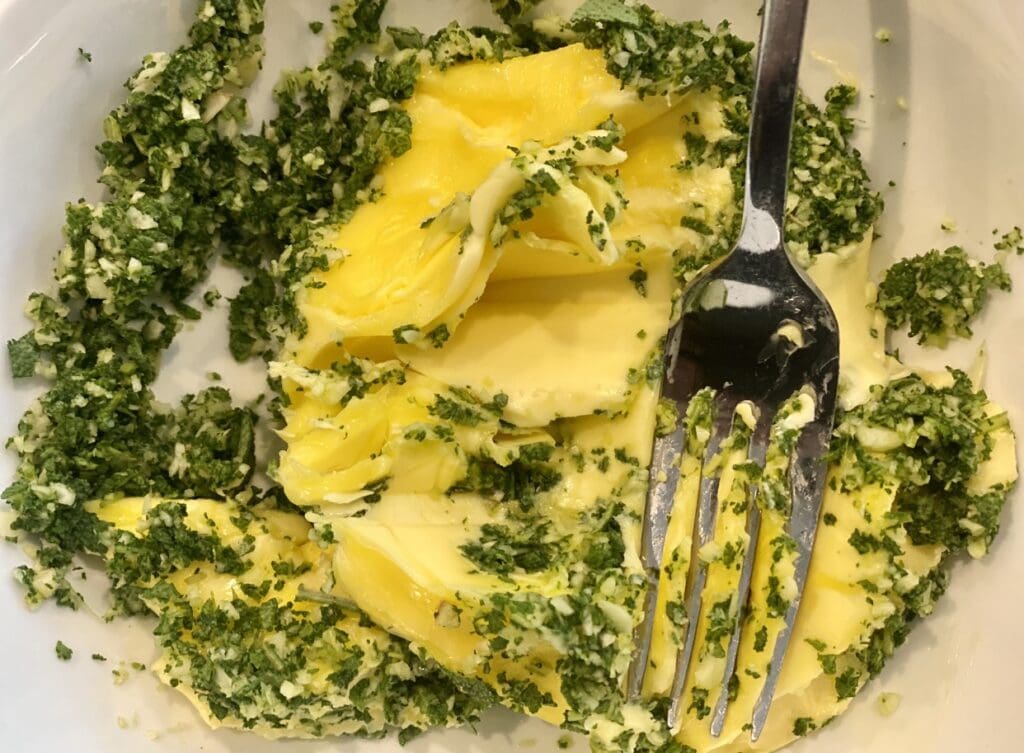
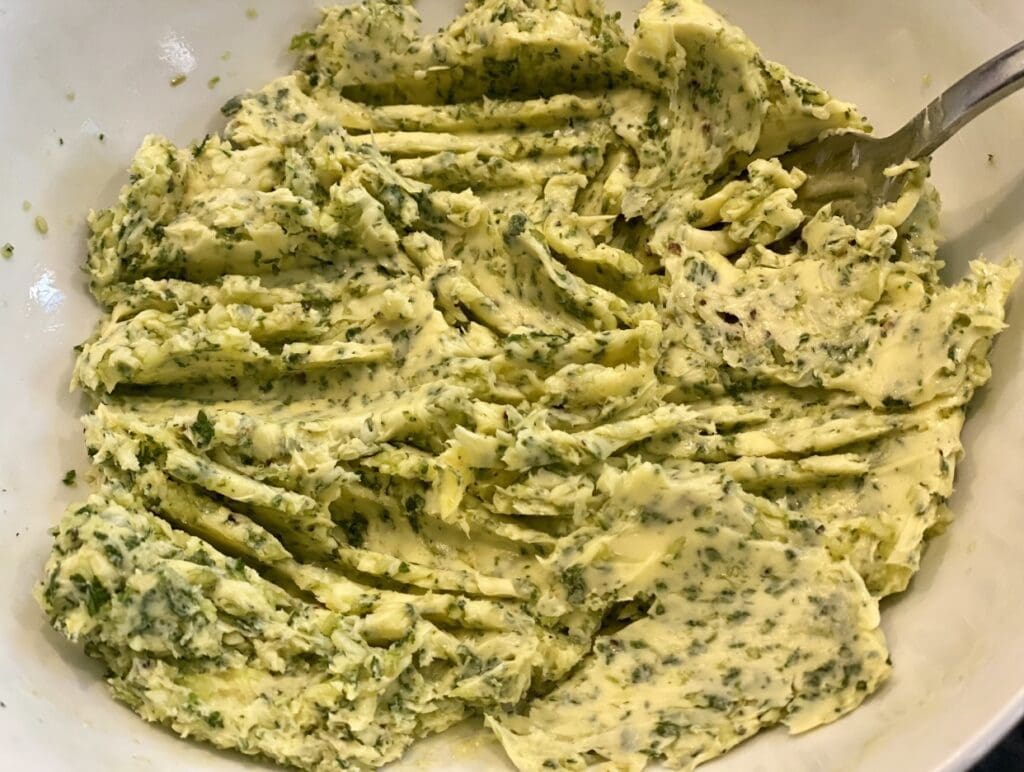
Remove the defrosted turkey from the fridge and let it rest at room temperature for 30 to 60 minutes (depending on how warm your place is)
During the last 15 minutes of resting the turkey, preheat the oven to 180°C (360°F) or 160°C (320°F) for fan-forced ovens.
In a bowl, use a fork to mix the butter, garlic, sage, salt and pepper together until well combined.
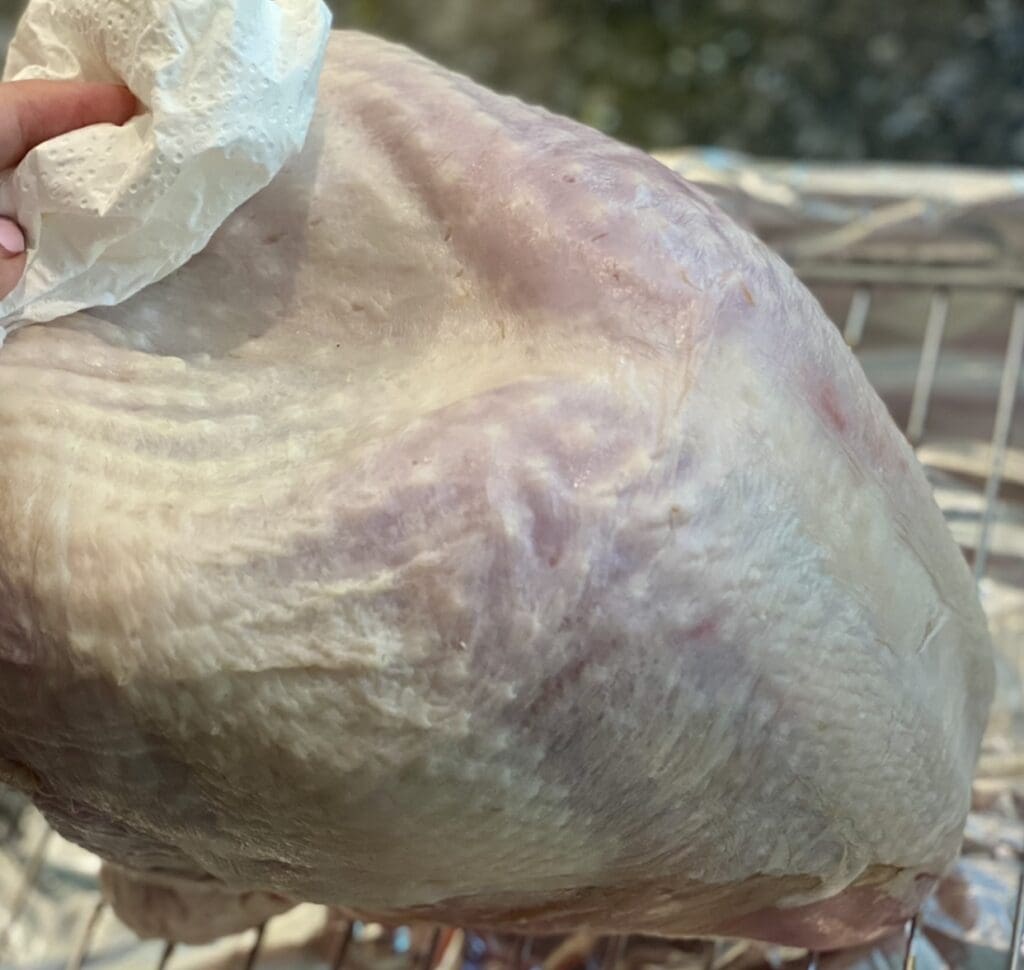
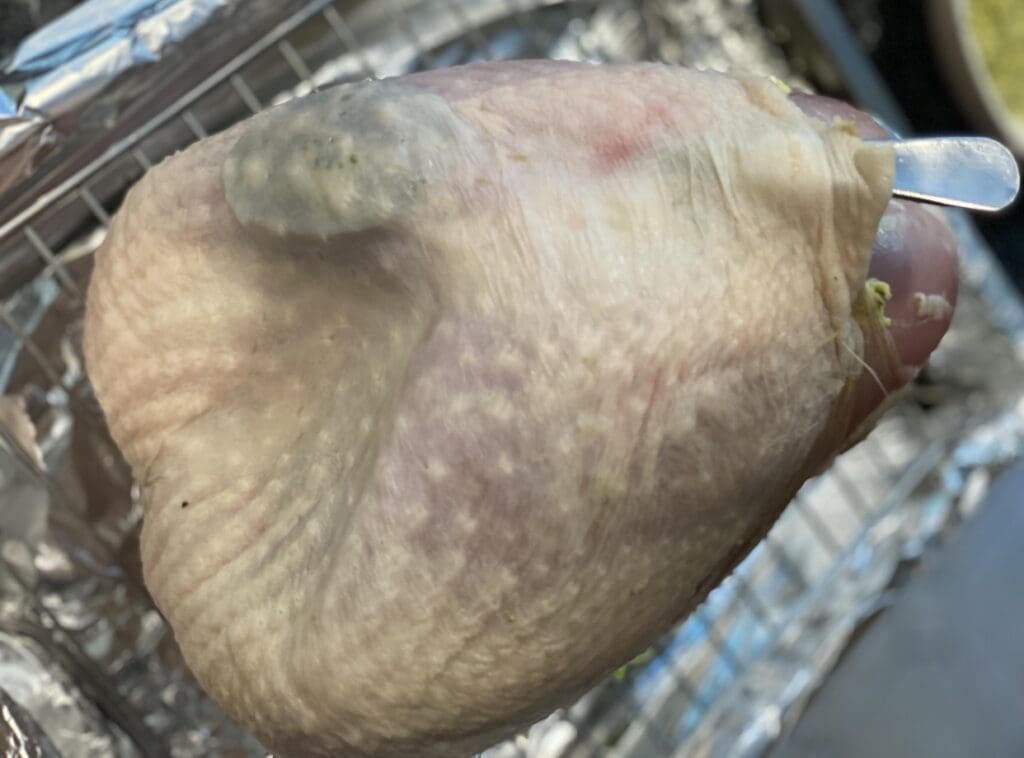
Line a large roasting tray with baking/parchment paper, then place foil over it (this is optional but makes cleanup much easier). Place the roasting rack in, then pour 2 cups of water inside the tray.
Place the turkey on the roasting rack and use a paper towel to pat the turkey (dry all over, including the cavity). Carefully insert a spoon between the skin and flesh, then use gentle pressure to separate them away from each other. Take care not to tear the skin.

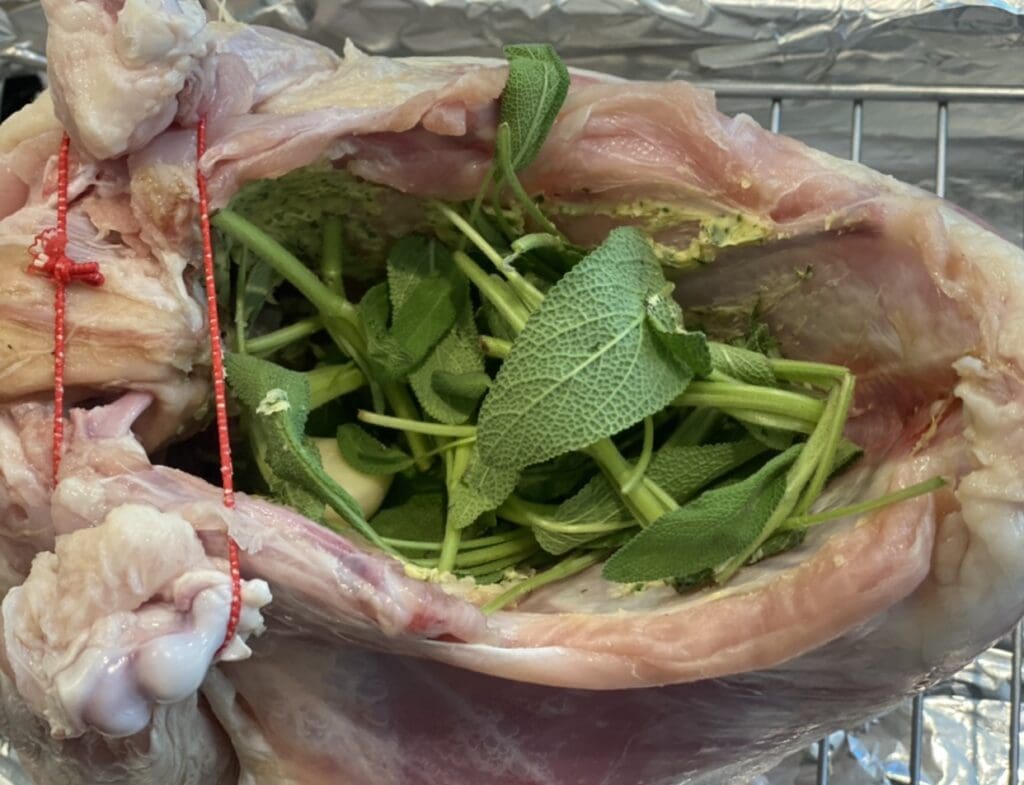
Turn the turkey upside down and rub a spoonful of herb butter in the cavity. OPTIONAL – If you have any remaining sage leaves or garlic, place them in the cavity.
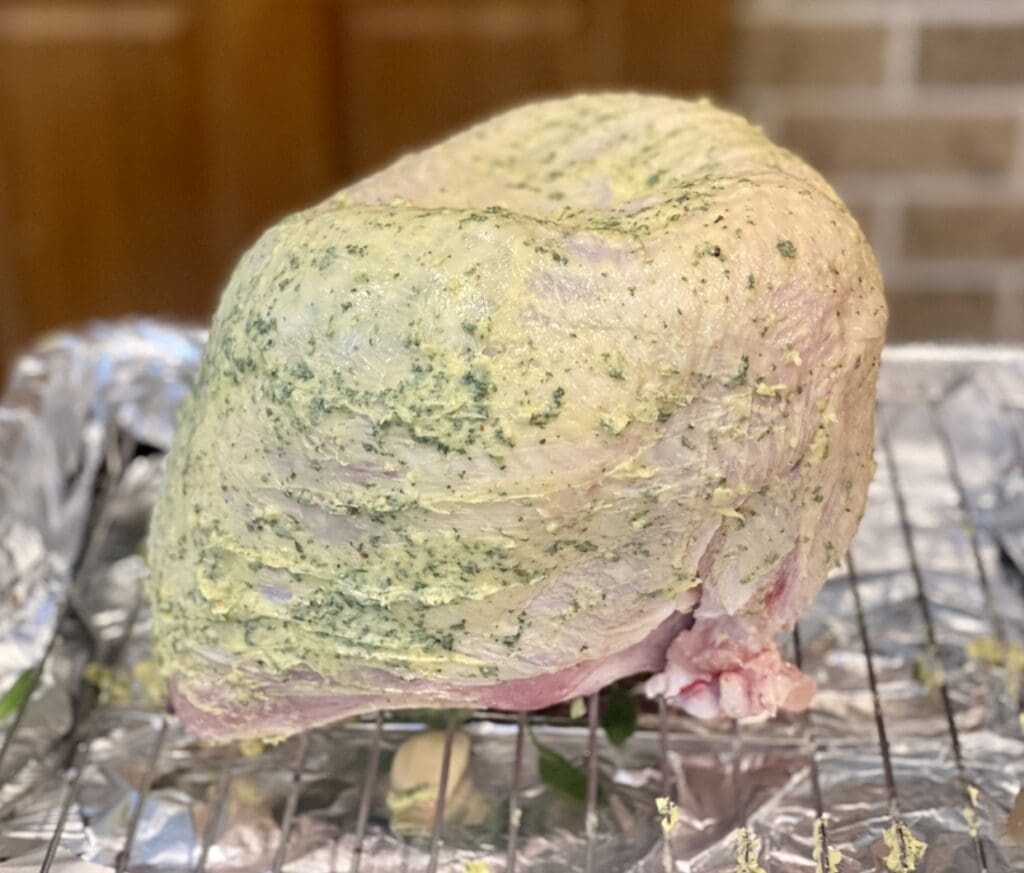

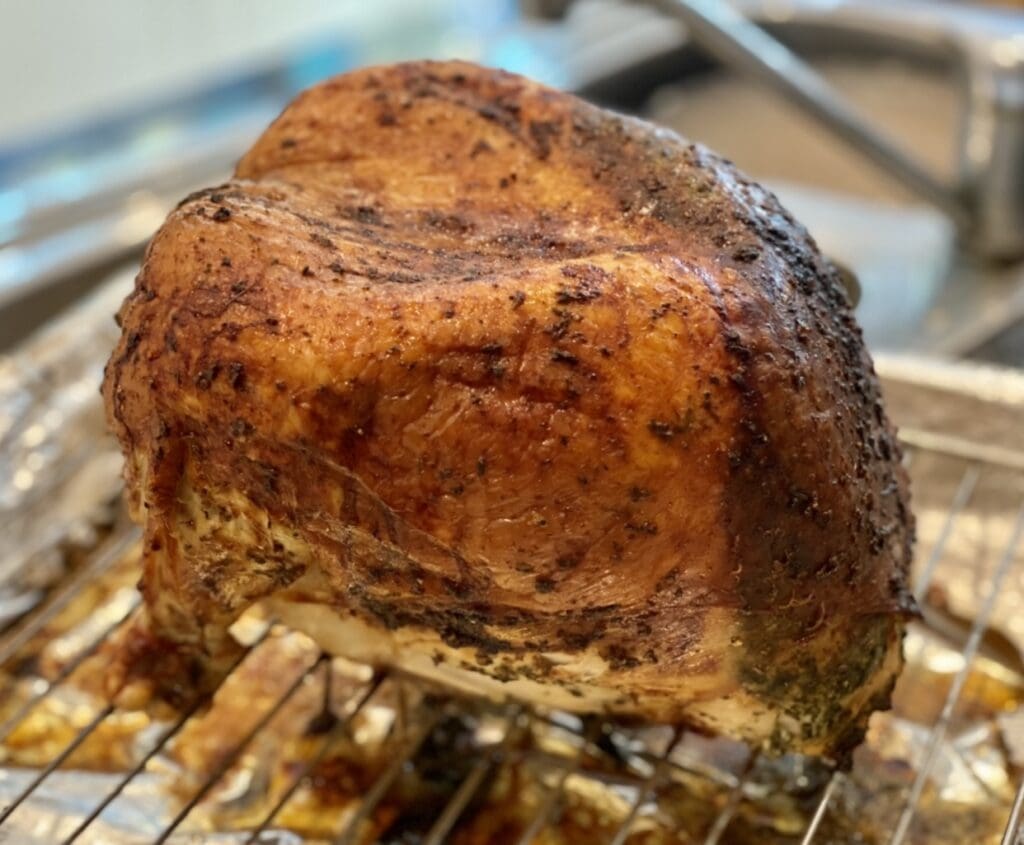
Place most of the remaining herb butter in between the flesh and skin. Massage the butter to move it evenly along the turkey breast. Rub some herb butter over the skin, then drizzle the skin with olive oil. Roast for an hour, then use a spoon to baste the turkey with its dripping, then continue roasting for another 30 to 60 minutes or until the thermometer reads 71 to 74°C (160 to 165°F) when inserted into the thickest part of the flesh.
Allow the turkey to rest for at least 30 minutes (or 1 hour) before carving.
Leftovers – Allow the Roast Turkey Breast to cool completely at room temperature, then transfer it into a sealed container and store it in the fridge for up to 3 to 4 days. Cooked turkey also freezes well for up to 2 to 3 months.
I’ve used a third-party application to calculate the calories and nutritional information, so please use this as an approximate guide only.
Cooking measurements are in Australian standard spoon and cup measurements. For specific details and conversions, visit our Australian Cooking Measurements page.
I would love your feedback and support if you made this recipe. To do this, please rate this recipe and provide a comment by scrolling down this page or by clicking that green circle on the bottom left. An email address is required (for spam), but it won’t be published. I would also love to see your dish, so don’t forget to tag me on my Instagram account ‘3catsfoodie’
Cheers – Cat T
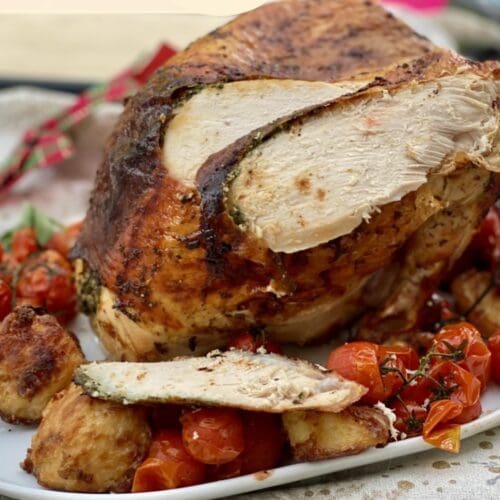
Roast Turkey Breast (Butter, Sage and Garlic)
Ingredients
- 3 kg raw turkey breasts/crown/buffe (raw, bone-in) (NOTE 1)
- 150 gm unsalted butter
- 4 large garlic cloves
- ⅓ cup finely chopped sage leaves (fresh, not too packed) (NOTE 3)
- 1 tsp salt
- ½ tsp black pepper (freshly grinded)
- 2 cups water
- 2 tbsp olive oil
Instructions
- Remove the defrosted turkey from the fridge and let it rest at room temperature for 30 to 60 minutes (depending on how warm your place is)During the last 15 minutes of resting the turkey, preheat the oven to 180°C (360°F) or 160°C (320°F) for fan-forced ovens. In a bowl, use a fork to mix the butter, garlic, sage, salt and pepper together until well combined.

- Line a large roasting tray with baking/parchment paper, then place foil over it (this is optional but makes cleanup much easier). Place the roasting rack in, then pour 2 cups of water inside the tray.Place the turkey on the roasting rack and use a paper towel to pat the turkey (dry all over, including the cavity). Carefully insert a spoon between the skin and flesh, then use gentle pressure to separate them away from each other. Take care not to tear the skin.

- Place most of the remaining herb butter in between the flesh and skin. Massage the butter to move it evenly along the turkey breast. Rub some herb butter over the skin, then drizzle the skin with olive oil.

- Roast for an hour, then use a spoon to baste the turkey with its dripping, then continue roasting for another 30 to 60 minutes or until the thermometer reads 71 to 74°C (160 to 165°F) when inserted into the thickest part of the flesh.Allow the turkey to rest for at least 30 minutes (or 1 hour) before carving.


